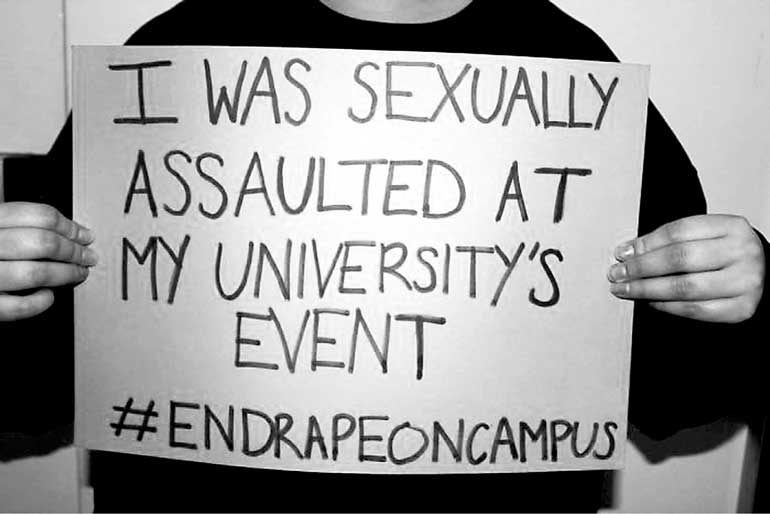Tuesday Apr 23, 2024
Tuesday Apr 23, 2024
Saturday, 5 August 2017 00:02 - - {{hitsCtrl.values.hits}}
 A report released this week by the Australian Human Rights Commission may well be an eye-opener for Sri Lanka. In what has been hailed as “a landmark report”, it reveals facts and figures of sexual assault at Australian universities.
A report released this week by the Australian Human Rights Commission may well be an eye-opener for Sri Lanka. In what has been hailed as “a landmark report”, it reveals facts and figures of sexual assault at Australian universities.
A national survey of 31,000 students has exposed that half of students (51%) were sexually harassed at least once in 2016, with one in five students sexually harassed in a university setting.
6.9% of students were sexually assaulted at least once in 2015 or 2016, with 1.6% assaulted in a university setting.
While “sexual harassment” is defined under the Sex Discrimination Act 1984 as “an unwelcome sexual advance”, “an unwelcome request for sexual favours” or “other unwelcome conduct of a sexual nature”, “sexual assault” can include rape, sexual abuse and unwanted touching of a person’s breasts, bottom or genitals.
It has been found that 94% of students who were sexually harassed and 87% of those who were sexually assaulted did not make a formal complaint to their university.
Among the results revealed were:
nFemale students were twice as likely as male students to be harassed and three times as likely to be sexually assaulted or raped. Most perpetrators were male.
nMost victims of rape and sexual assault within university communities said they knew the perpetrator, most of them being fellow students from the same university.
nSexual assaults occurred in a range of places within university communities including university grounds, teaching spaces, social spaces and college residences.
nThe most common setting for sexual harassment was travelling to and from university on public transport, whereas the most common setting for experiencing sexual assault was at a university residence or social event.
nPostgraduate students were significantly more likely to be sexually assaulted and harassed by staff than undergraduate students.
nOf bystanders who reported witnessing sexual harassment, only 21% took action, while 37% of bystanders to a sexual assault took action. The most common reasons for not taking action were not thinking it was serious enough to intervene and not knowing what to do.
End Rape On Campus (EROC) Australia, a group who works to end sexual violence at universities through direct support for survivors and their communities, and prevention through education, described the findings as “shocking but not surprising”. It added that many survivors did not report assaults, and downplay their own experiences as “non-serious” due to shock, disbelief, and the impacts of trauma.
EROC added that sexual assault survivors will often go into denial and so will minimise their experience and say things like ‘it doesn’t matter anyway’ or ‘it wasn’t that serious’. They might tell themselves, ‘maybe it’s not that bad, maybe it’s all in my head, maybe I led him on’. This self-blame and denial is a function of trauma.”
A few days before the release of the report EROC launched a campaign showing females holding up placards demanding their universities take stronger action against sexual assault on campuses and provide better support for victims. The powerful social media campaign exposed how Australian universities have mishandled rape and sexual assault complaints.